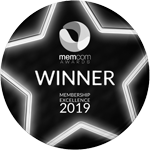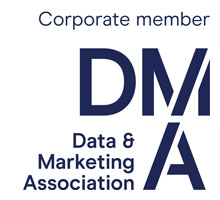MRS Analytics Spotlight: Alison Gilbertson
09 July 2024

Interview with Alison Gilbertson - This month's MRS Analytics Spotlight
Authored by Tilly Lewis, Senior Marketing Manager & Wellbeing Ambassador at Boxclever
Alison has almost 20 years experience, working both agency and client side in insight analytics roles. What she enjoys most is turning complex analysis into simple and clear insight that really adds value to the businesses that she’s working with. She believes that fusing primary research with secondary data is when insights become truly actionable, engaging senior stakeholders who can see the size of the opportunity and a return on their investment. In her current position as Analytics Director at Boxclever and within all her previous roles she has worked on many different projects linking research data to other data sources (customer, market or location) to guide future strategies. Alison is also a wife and mum and enjoys running up on Ilkley moor with her golden labrador Wilbur.
What is your current role?
I’m currently head of analytics at Boxclever. We are a small but experienced team working on advanced analytics for a wide variety of clients. Although we love analytics we don’t get lost in the technical detail, our main objective is to ensure commercial actionability and we work with primary and secondary data sources to make this happen. We focus on making the complex simple and creating the narrative in collaboration with qual and quant.
How did you get into market research?
I’ve had a bit of a squiggly career path. After completing a degree in Maths and Management, I went on to work for Hoare Govett a corporate broker in Investor Relations, but after 5 years I missed maths and the challenge of problem solving and decided to go back to University to study for a Masters degree in Statistics. An old school friend had gone to work in Market Research and she suggested it would be a good fit for me. I liked the idea of being able to use the statistics I had learnt and applying it to business problems. It’s not just about running the analysis but thinking about what it means, simplifying and communicating it so it can be used to guide strategy.
How do you stay creative when working with numbers and data all day?
I think you can be creative with numbers and data. It’s not all about following a process and my favourite type of project is exactly opposite. Sometimes it can be really challenging to get to the right output and you have to think outside the box in terms of how to tackle different stages. It’s not always an exact science and we have to use bigger picture thinking in combination with the analytical detail.
Why is it important research uses data analytics/ science in your opinion?
Data analytics can derive insights that go beyond what consumers are simply saying. It can guide strategic direction and linking to secondary data sources shows the commercial impact and the size of the opportunity.
What three pieces of advice would you give to a data scientist entering market research?
Make the complex simple.
Collaborate with qual and quant to understand the bigger picture.
Never stop learning and challenging yourself.
If you had to describe your job to a child – how would you describe it?
I have 2 children of my own aged 9 and 12 so I have endeavoured to explain my job to them before. What I’ve realised is it has to be a very short explanation and include something they can relate to. So probably something like this ‘I look at numbers that show how people buy things, then we use charts to understand this and tell companies what they can do better to make people happy’ I think by this point my nine year old will already be off doing a cartwheel!
What's the role of data analytics or data science for research purposes within your company?
Within Boxclever data analytics is a core part of our proposition to provide clarity and clear actions. We’re able to work with both primary research data and any secondary data sources to make the research commercial.
Have the research questions that your clients bring to you changed over time? Have the solutions changed?
Research questions have become less prescriptive as time has gone on. As we build relationships with clients, they trust us to work with them to build the brief together from their stakeholder objectives. There are solution enhancements and shiny new methods to experiment with, but the biggest change is in the delivery of the insight. Moving away from data heavy decks to a story led deck with engaging visualisations but with slick dashboards to back this up and give the extra level of detail when needed.
Can you share a story about a data project that went completely differently than you expected?
Data analytics can often undercover a nugget of information that becomes extremely powerful and can be quoted for years afterwards. When I was in the decision science team at ASDA I was asked to analyse the value of their omnichannel customers and the cannibalisation impact on store revenue. It was used to guide some much bigger decisions than I was expecting.
What’s the one myth about data analytics you wish you could debunk?
In the past but much less so now, we have been thought of as a support function, sitting in the background having a very transactional relationship with others in the organisation. Yes, we analyse data, but we also interpret it, bring it to life, understand how it fits in with everything else and how best to talk about it.
What’s the best piece of career advice you’ve ever received?
Always be yourself! It’s the only way you can enjoy what you do.
Get the latest MRS news
Our newsletters cover the latest MRS events, policy updates and research news.











0 comments